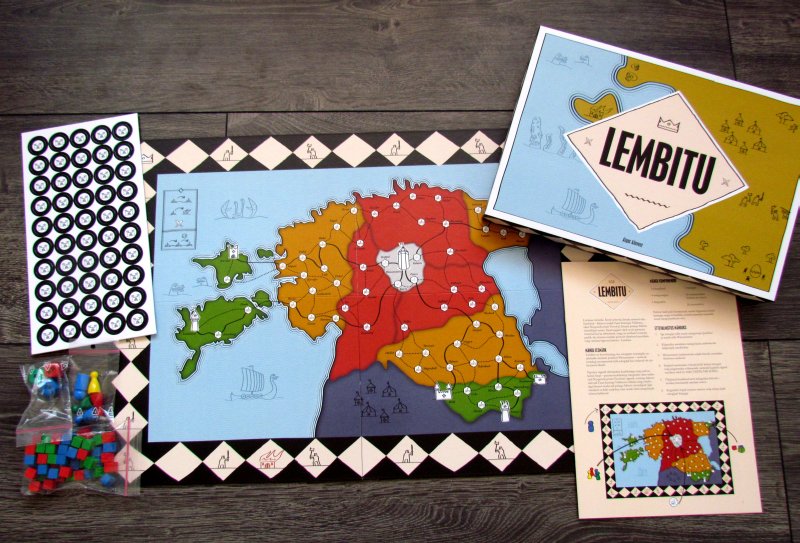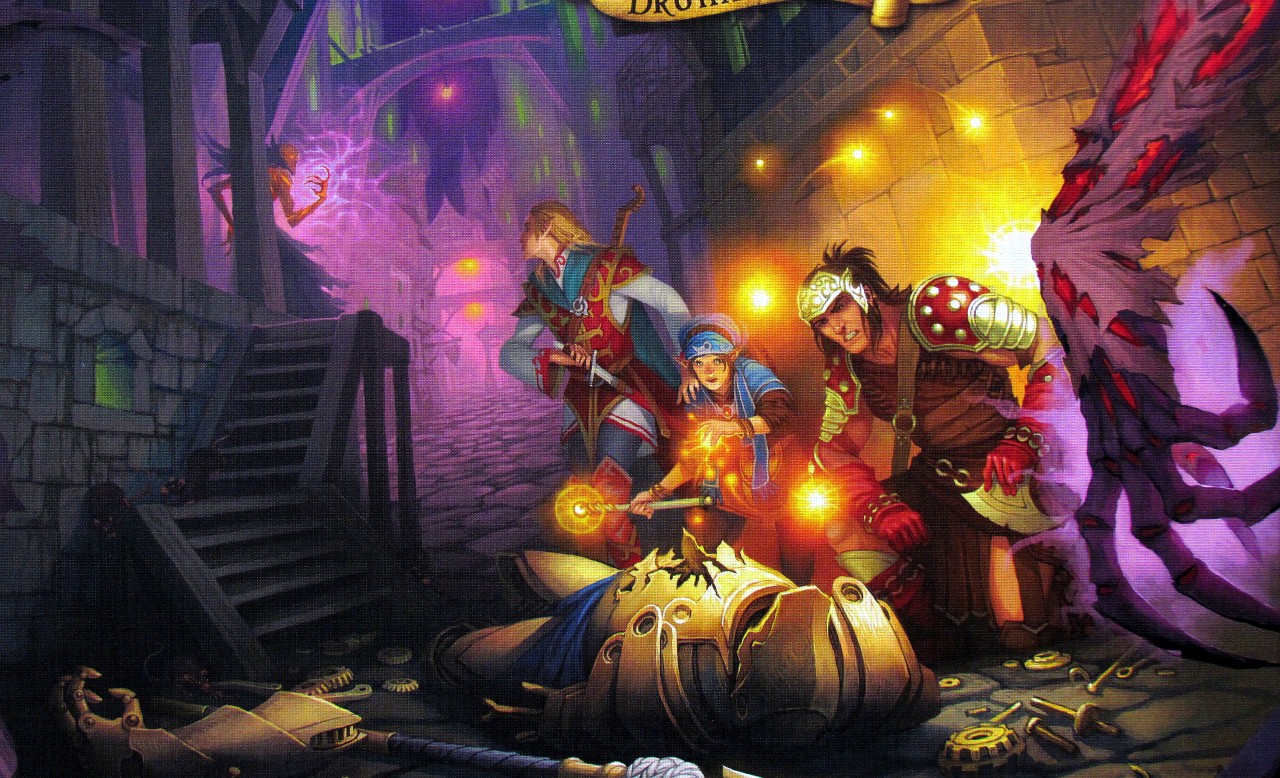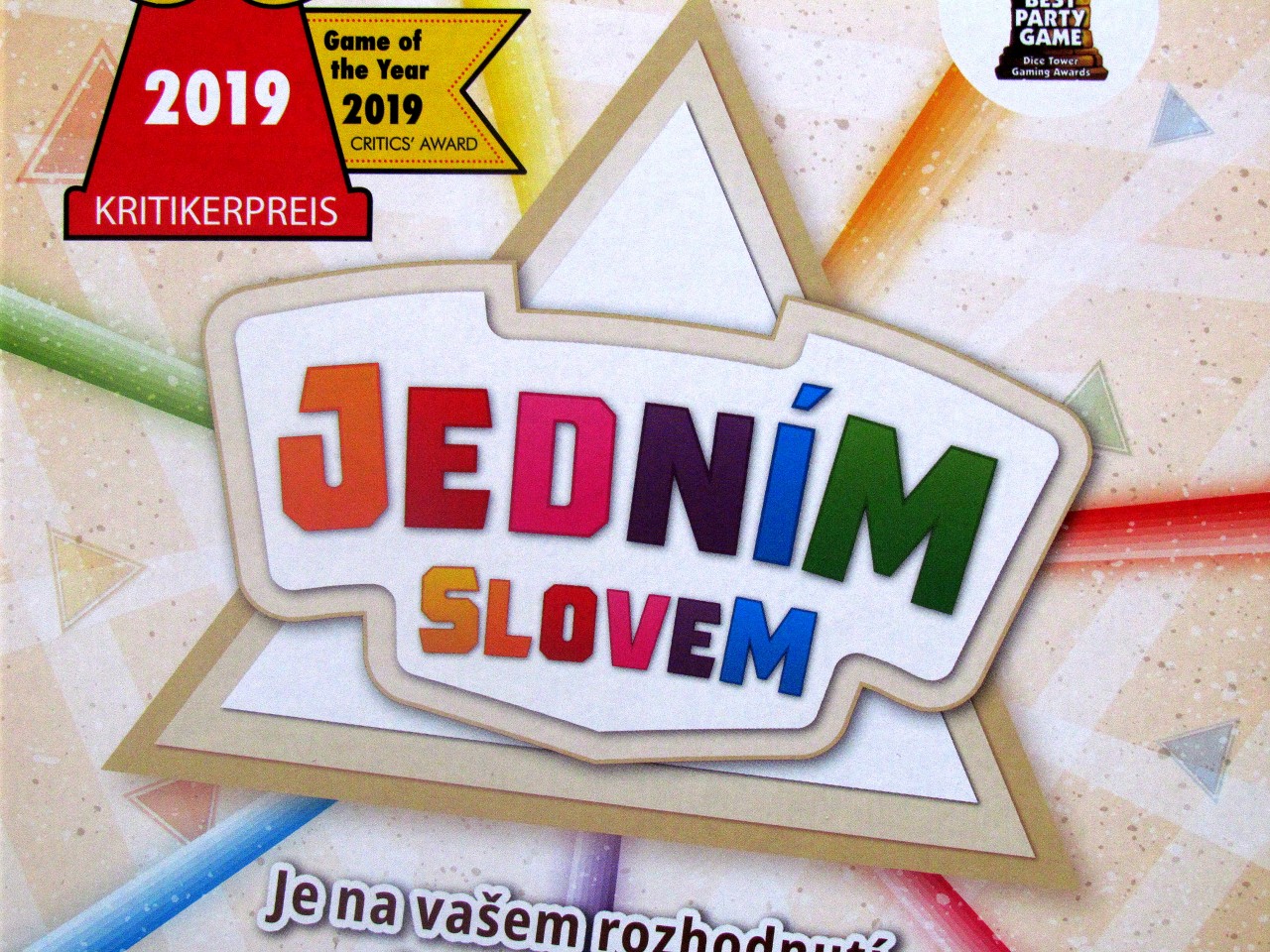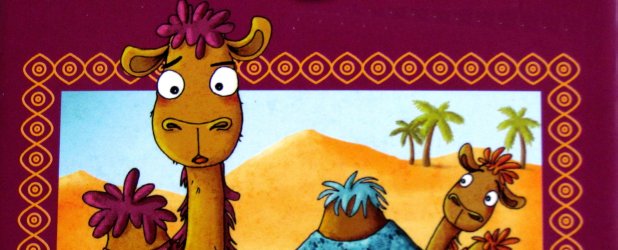Maybe it’s just a rumor. Name of the legend, that never was and will be true. In the darkest moments of our nation, we turned to him and prayed he helps us. I still have to go back to that thought, looking out from the tower of the capital city in vain and hoping to see another flag. Neither crusaders nor bishop’s men or even prince’s units will not help us. They are all our enemies now. We need help, and the only one, who can we turn to now is Lembitu.
Such a hero, who rises from ordinary people, and is willing to fight for them all. He will stand against three armies and hopefully eradicate poverty from all over Estonia. Such was Lembitu in history. And that will also be Lembitu in board game, which came to us from another unexpected destination. We have indicated Estonia and it is truly home of the game and its author Aigar Alaveer.
Historical theme can be felt from the box with a hint Estonian peninsula and island of Saaremaa. The package itself is relatively low, but with other dimensions belongs to category of medium-sized board games. Because inside, we find a proper folding game board, which contains country divided into several colors. These are then filled with dots and lines representing cities and roads between them. Completely amid them is your stronghold, where players will begin their battle for defense. All around the board winds turn counter with different icons.
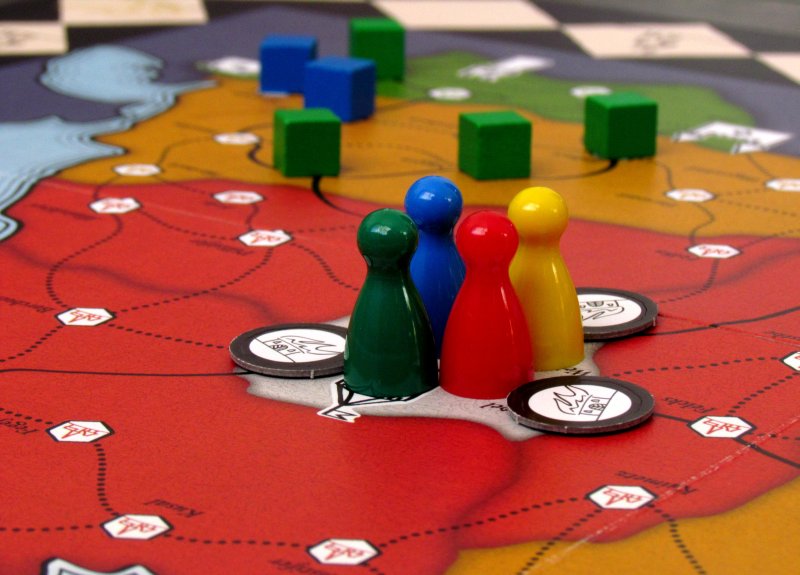
For players are also prepared four figures representing their hero and one other figure, that will count down turns. Furthermore, we find a trio of wooden dice and then a bag full of small wooden cubes / tokens representing enemy troops approaching capital from three sides.
At the beginning of the game, each player chooses one pawn by color. All participants then together begin battle in Weisenstein, therefore, almost in the midst of the map. Remaining character is then placed on start of the route for counting turns in the corner, on position with crown. Four positions around capital are equipped with uprising tokens and then border regions of the board are occupied with starting enemy units. This is done using four rolls of dice. According to symbols rolled, players spread the enemy soldiers, marking one of six possible access routes.
It is ready to start distribution of power, with which players will have to deal with. Each participant has fixed number of actions in his turn, which is derived from the number of players in the game (up to three for six). Individual points can be spent on total of three activities, first is to move pieces around the map. Player can make even one step further at the end of his turn, in case his army moved along main road (printed in bold).
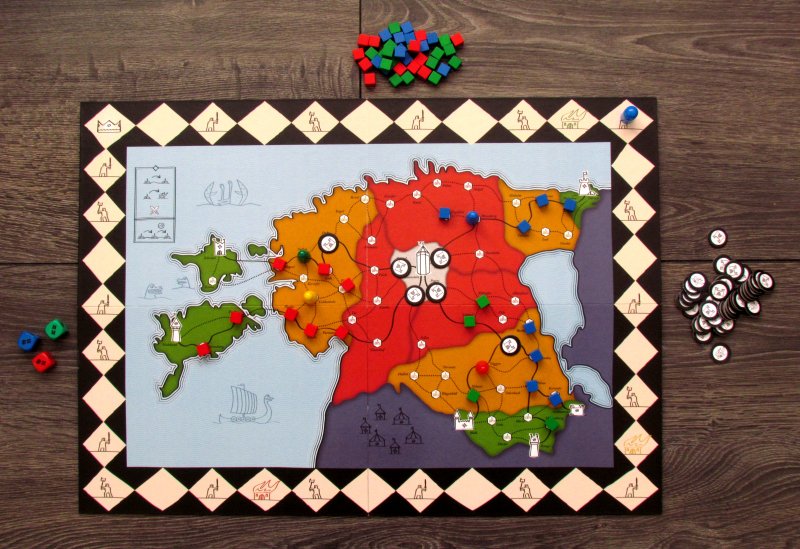
Equally important activity is fighting raiders, that simply means removing enemy cubes from where player’s army stands at the moment. This often disrupts chain of infantry of the enemy. But before attackers get to their action, player can also use his third operation, which is rebellion. Hero plants a seed of frustration into the hearts of residents of the city. At a time, when turn counter reaches on its way one of the two rebellion symbols, discontent tokens will be turned into roadblocks. And they prevent enemy in moving straight forward.
Once all players use their action possibilities, it is time for enemies. Like in the beginning, one of the players rolls trio of dice for them. Only once. According to the results, cubes are placed together to drive the enemy: red from the east, blue from the west and green from the south. Direction is decided by color of the dice. But each of the invaders has two castles, which he can build his chain of infantry on. According to the shape of dots on a die thrown, players add new cube to that chain. New recruits of attackers are always added along the shortest path towards Weissenstein and have to follow the main road. Only fortification forces them to turn to the dashed forest trails.
Battle for the liberation of Estonia continues by heroes alternating with marauders, until sufficient time has elapsed. If heroes managed to defend their city against the odds and hold Weissenstein long enough (no enemy cube moves to their location), they become winners. But they can also easily lose, if enemy troops break into Weissenstein any time before that.
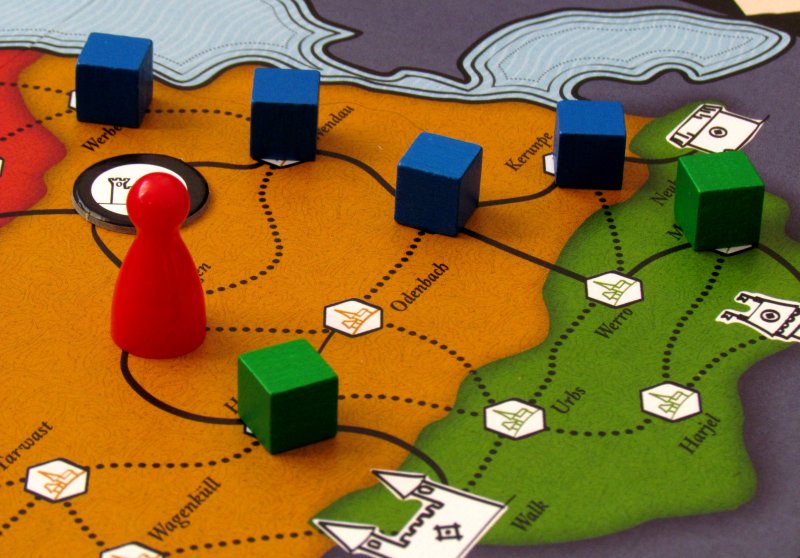
Lembitu game is simple, cooperative, but first and foremost surprising. At first glance, you would say, that it is actually a microgame in the style of Tiny Epic Kingdoms. This corresponds to simple graphics, cubes and filling map. Rather, it all resembles a game of Eight-Minute Empire.
But it is also different from all those games mainly because all heroes work together here. There is no room for rivalry, because future of your country is at stake. Cubes representing enemy units are rushing forward and although enemies must first fill empty positions (killed by your heroes), it’s tide against which there is no lasting defense. If they are not stopped, it would be impossible to defend forever. And waiting for Lembitu is what you do. Simply hold long enough and you will be saved.
Time limit is set reasonably and players have different number of actions as their number at the table decreases. Thanks to this, difficulty in various numbers of participants changes and remains playable. Chances for victory but differ in every game due to luck of dice. Cubes can hurtle really fast towards Weissenstein and players may simply not have enough time to respond. Just a few bad rolls of the dice is all you need.
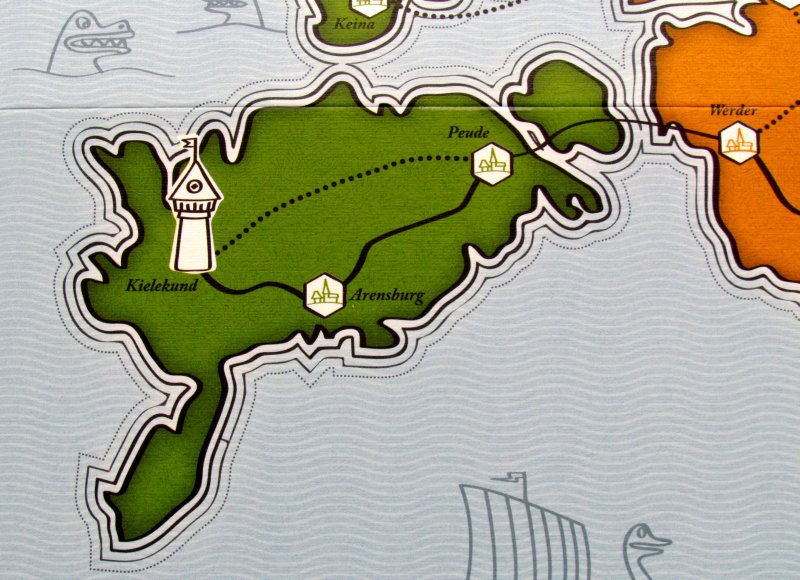
Now dice themself guarantee variability. Each game will be completely different and exciting, although one is won by a thread, while sometimes you lose without any chance to get back. Fortunately, clear victories can sometimes happen as well, so you can at least a little rectify reputation among the population of this small state. In addition, although there is coincidence and it decides about chance of the group of heroes, whole game is quickly prepared and played. So you will not even bother, that there was some bad luck. Usual gaming time is around 45 minutes, which in the company of your mates might run away very quickly.
An important defense concept in addition to direct elimination of cubes is insurgency and its correct usage. Players can thus slow enemy advance forward and force it to swerve and go a long way around.
Everything is extremely simple. Once you understand, how enemies progress and where they start (English rules have minor imperfections and holes regarding this concept), you will explain it to others within two minutes. Whole game flow is quite simple and intuitive. Game is great for beginners, who will appreciate a sufficient difference from others usual games as well as for more advanced gamers, who will like its difference from other cooperative games.
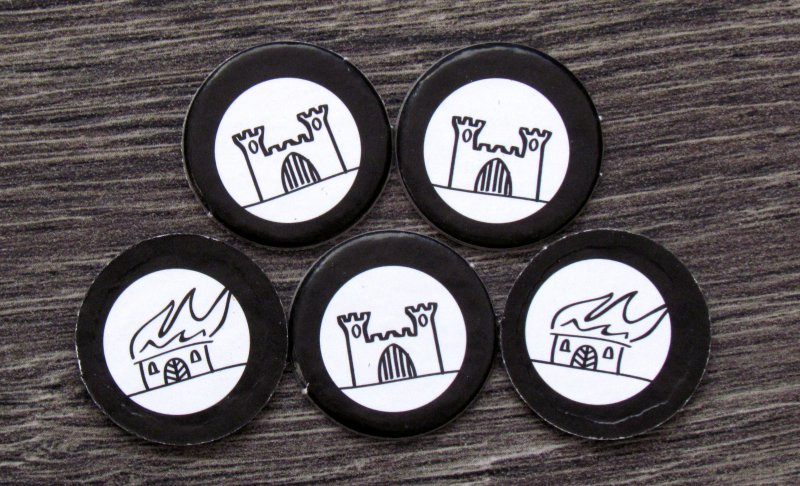
In addition to luck, that is a major objection and our only issue with the game, we should also mention, that it is actually an abstract logic puzzle from which players try to get away. While you can feel rebellion and struggle for survival in the background, a real sense of the battle is not there. Only cubes, their addition and removal. This is not anything to criticize much, because the processing itself is really nice, although very simple.
Lembitu is a prototype of cooperative fun. You can find fundamental weaknesses on it, such as randomness or leader player problem. But all this fades away in face of fast, simple and fun gameplay, that does not get old after more matches. Thanks to its accessibility and cooperation, we appreciated Lembitu very much and we hope, that it will find its way to your table as well.
Game can be purchased at the booth of 2D6 company at Spiel 2015 fair in Essen.
<br><br>
| Informace o hře ze serveru BoardGameGeek (odkazy směřují tam) | |
| Autor | Aigar Alaveer |
| Vydavatel | 2D6.EE (Side Quest Games) |
| Rok vydání | 2015 |
| Počet hráčů | 2 - 4 |
| Herní doba | 60 |
| Minimální věk | 8 and up |
| Jazyková závislost | Some necessary text - easily memorized or small crib sheet (3 voters) |
| Kategorie | Medieval, Wargame |
| Mechanismy | Action Points, Cooperative Game, Dice Rolling, Point to Point Movement |
| Rozšíření | Lembitu: Heavy Cavalry |
| Rodina | Components: Dice with Icons, Components: Map (Continental / National scale), Country: Estonia |
Více o hře.
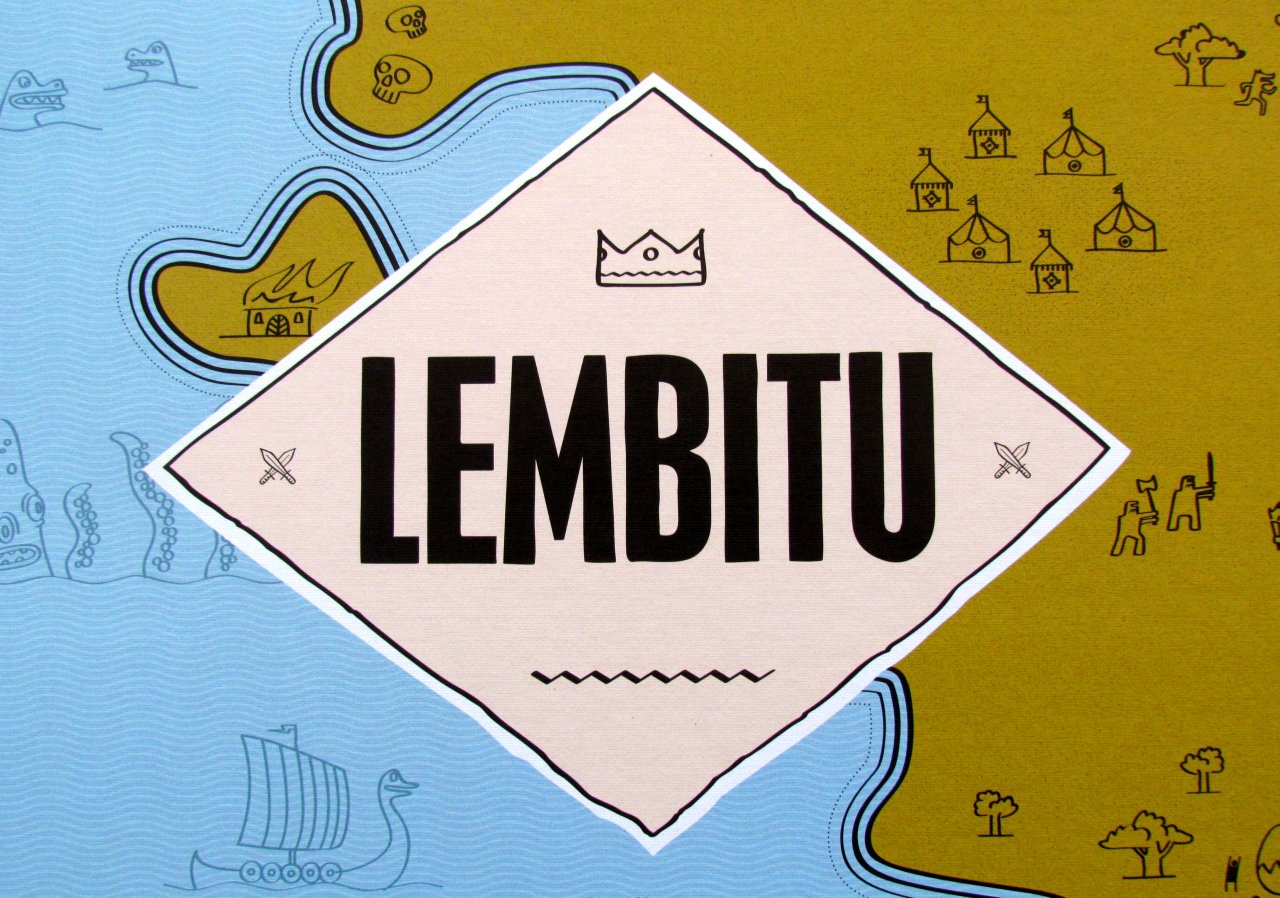

+ variable game opening and disposition of armies
+ pleasantly quick turns and total time
+ accessible for all
+ cooperative game without unnecessary complexity
+ playable in all counts
- abstractness kills theme
- luck determines victory or defeat
- inaccuracies in the rules

